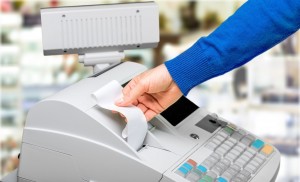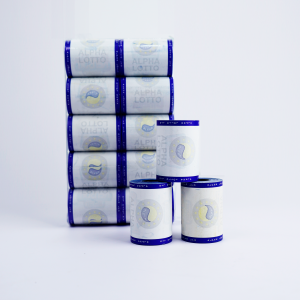For point of sale (POS) systems, the type of POS paper used is crucial for maintaining the validity and readability of receipts. Different types of POS paper can meet various needs, including durability, printing quality, and cost-effectiveness.
Thermal paper is one of the most common types of POS paper. It is coated with a chemical substance that will change color when heated, and does not require ribbons or ink cartridges. This makes it a popular choice for businesses seeking low maintenance and cost-effective solutions. However, thermosensitive paper is usually not as durable as other types and will fade over time when exposed to light or heat.
On the other hand, copperplate paper is a more traditional choice for POS systems. It is made of wood pulp and is known for its durability and high-quality printing ability. Copperplate paper is commonly used in environments that require long-term receipt retention, such as banks or legal transactions. However, it is worth noting that coated paper may be more expensive than thermosensitive paper and may require the use of ribbons or ink cartridges.
Another option is carbon free paper, which is usually used to make copies or three copies of receipts. The top of the carbonless paper has microcapsule dyes and clay on the back, and the front of the negative has an active clay coating. When pressure is applied, the microcapsules rupture, releasing dye and forming a replica of the original receipt on the back. This type of POS paper is very suitable for enterprises that need to save multiple transaction records.
In addition to these types, there are also specialized POS papers designed specifically for specific purposes. For example, security paper includes features such as watermarks, chemical sensitivity, and fluorescent fibers to prevent forged receipts. The label paper is coated with self-adhesive backing, allowing businesses to print receipts and labels simultaneously. Finally, for companies looking to reduce their environmental footprint, recycling POS paper is an environmentally friendly option.
When choosing the right type of POS paper for your business, factors such as printing requirements, budget, and industry-specific requirements must be considered. Although thermal paper may be suitable for busy retail environments, coated paper may be more suitable for businesses that require long-term receipt retention. Similarly, companies that require duplicate receipts may benefit from using carbon free paper.
In summary, the type of POS paper used by a company can have a significant impact on its operations and customer satisfaction. By understanding the different types of POS paper and their respective advantages and limitations, enterprises can make wise decisions when choosing the POS paper that best suits their needs. Choosing the appropriate POS paper is crucial for maintaining the efficiency and reliability of POS systems, whether it is cost-effective thermal paper, long-lasting coated paper, or carbon free copy paper.
Post time: Jan-19-2024



